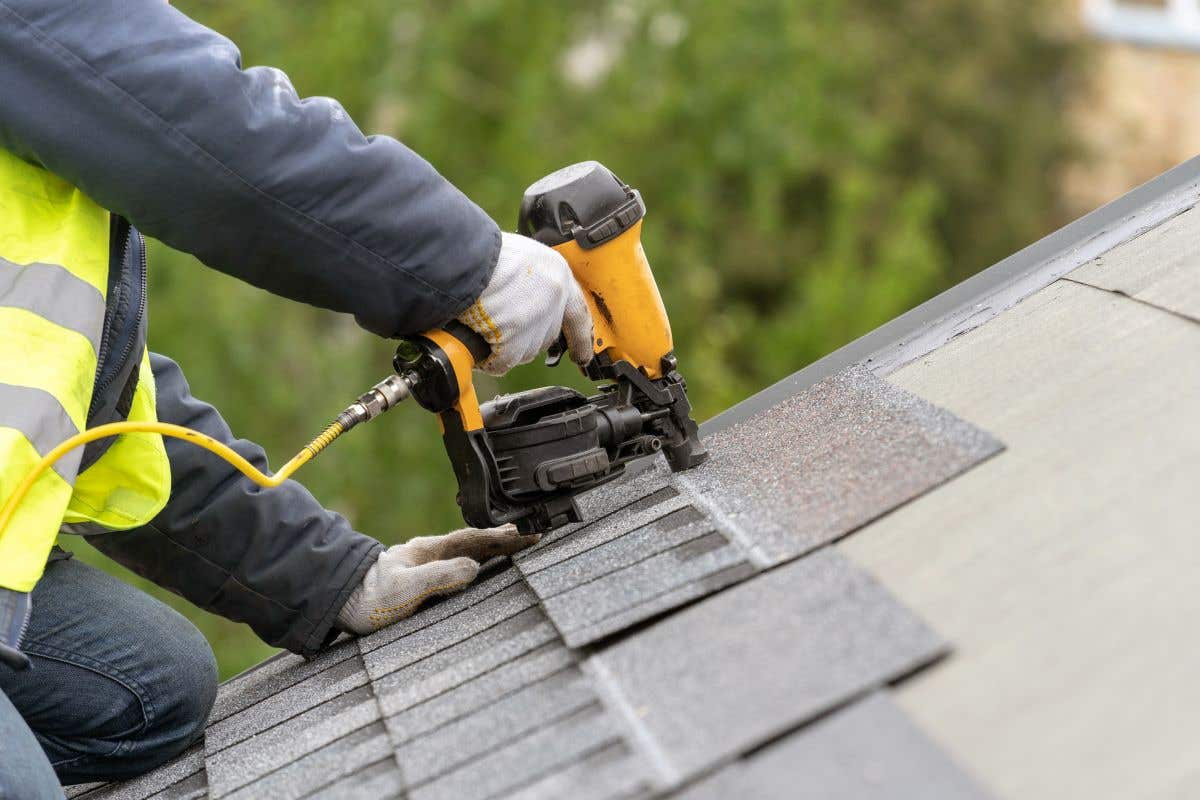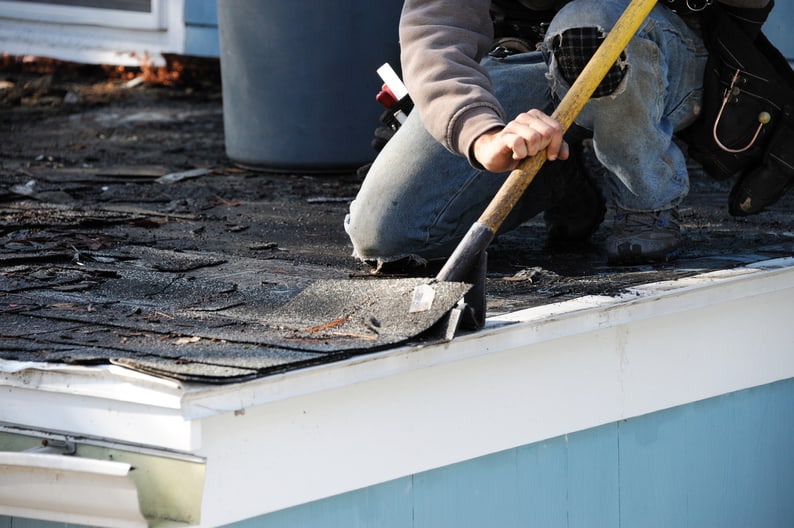Roofers Oahu: Skilled Professionals for Roof Installations and Repair Works
Recognizing the Different Types of Roofings: A Comprehensive Guide for Homeowners
With a variety of alternatives-- varying from the standard gable to the contemporary level-- each kind offers unique advantages and challenges that must straighten with the home owner's ecological factors to consider and details demands. As we check out the details of different roofing types, it ends up being noticeable that one dimension does not fit all; the ideal selection might stun you.
Gable Roofing Systems
Saddleback roofs, defined by their triangular form, are among one of the most prominent roof covering styles as a result of their simplicity and efficiency in dropping water and snow. This design includes 2 sloping sides that satisfy at a ridge, enabling effective drain and lessening the threat of water accumulation. The steep pitch frequently linked with saddleback roofs boosts their capacity to handle hefty precipitation, making them appropriate for numerous climates.
In enhancement to their functional advantages, saddleback roofs offer visual convenience. They can be adapted to various architectural styles, from traditional to modern homes. The style can additionally fit added functions such as dormer windows, which boost natural light and ventilation in the attic room area.
Additionally, gable roof coverings supply enough room for insulation, adding to power efficiency. Homeowners can select from a variety of roof covering products, consisting of asphalt tiles, steel, and ceramic tiles, additionally enhancing personalization options.
Despite their advantages, saddleback roofs might need extra support in areas susceptible to high winds or hefty snowfall. Overall, the gable roof covering remains a popular choice as a result of its mix of functionality, durability, and visual appeal.
Flat Roofs
Flat roofings are usually acknowledged for their minimal layout and useful applications, especially in commercial and industrial settings (oahu roofing). These roofs include a nearly horizontal or straight surface, which permits simple construction and versatile room application. While they might lack the aesthetic appeal of pitched roof coverings, level roof coverings offer many benefits, particularly in city environments where optimizing space is essential
Among the main advantages of flat roofing systems is their ease of access. Property owners can make use of the roofing area for various functions, such as roof yards, terraces, or solar panel setups. Additionally, level roofings are usually much more affordable to maintain and set up compared to their sloped equivalents, as they call for less materials and labor.
Common materials made use of for flat roofings consist of built-up roof covering (BUR), changed asphalt, and single-ply membrane layers, each offering distinct advantages. In general, level roofing systems serve as a adaptable and functional choice for many property owners and companies alike.
Hip Roofing Systems
Hip roofing systems are characterized by their sloped sides that converge at the top, forming a ridge. This layout stands out from gable roof coverings, as all four sides of a hip roof covering slope downwards toward the walls, offering a much more stable structure. The angle of the inclines can vary, enabling adaptability in building looks and performance.
One of the key benefits of hip roofings is their capability to withstand hefty winds and negative climate condition. The sloped surface areas make it possible for much better water drain, lowering the danger of leaks and water damages. Furthermore, hip roof coverings supply enhanced attic room space, which can be utilized for storage or even transformed into comfortable locations.
However, constructing a hip roofing can be a lot more expensive and complex than easier roof kinds, such as gable roofings. The additional product and labor involved in producing the slopes and making sure appropriate architectural integrity can cause higher costs. In spite of these downsides, numerous house owners favor hip roofings for their durability, aesthetic allure, and capacity for power performance.
Mansard Roof Coverings
Mansard roofings, often acknowledged by their one-of-a-kind four-sided design, feature 2 slopes on each side, with the lower incline being steeper than the look what i found top. This building design, stemming from France in the 17th century, is not only visually attractive yet useful, as it makes the most of the functional room in the top floorings of a building. The steep reduced incline enables more clearance, making it a suitable option for attic rooms or lofts, which can be exchanged living rooms.
Mansard roof coverings are characterized by their flexibility, Click This Link fitting different building designs, from typical to modern-day. They can be created with various products, consisting of asphalt tiles, slate, or steel, giving home owners with a series of choices to fit their preferences and budget plans. Additionally, the style allows for the integration of dormer home windows, boosting natural light and air flow in the top degrees.
Nonetheless, it is necessary to consider the potential drawbacks. Mansard roofs might call for more maintenance due to the complexity of their layout, and their high slopes can be testing for snow and rain runoff. On the whole, mansard roofing systems combine elegance with practicality, making them a popular selection amongst homeowners looking for distinctive building features.
Lost Roofs
As home owners progressively seek simpleness and performance in their building styles, dropped roofing systems have become a popular selection. Defined by a single sloping aircraft, a shed roofing system offers a minimalist visual that enhances numerous home designs, from modern to rustic.
Among the primary benefits of a shed roof is its simple building and construction, which often translates to reduce labor and product costs. This design enables reliable water drainage, minimizing the threat of leaks and water damage. Furthermore, the vertical slope supplies enough space for skylights, enhancing all-natural light within the interior.
Dropped roof coverings also offer adaptability in regards to usage. They can be efficiently incorporated right into enhancements, garages, or exterior structures like structures and sheds. In addition, this roof style can accommodate various roof products, consisting of steel, asphalt roof shingles, or perhaps environment-friendly roofs, aligning with environment-friendly campaigns.
Nonetheless, it is vital to consider regional climate conditions, as hefty snow lots might necessitate modifications to the roof covering's angle or framework. Generally, shed roofing systems present a functional and aesthetically pleasing option for home owners aiming to take full advantage of performance without jeopardizing style.
Verdict


Gable roofings, identified by their triangular form, are amongst the most preferred roofing styles due to their simpleness and performance in shedding water and snow. oahu roofing. The steep pitch generally associated with gable roofing systems improves their capacity to handle heavy precipitation, making them ideal for numerous environments
While they might lack the visual appeal of pitched roofing systems, flat roof coverings supply numerous have a peek here advantages, particularly in city settings where making best use of space is essential.
